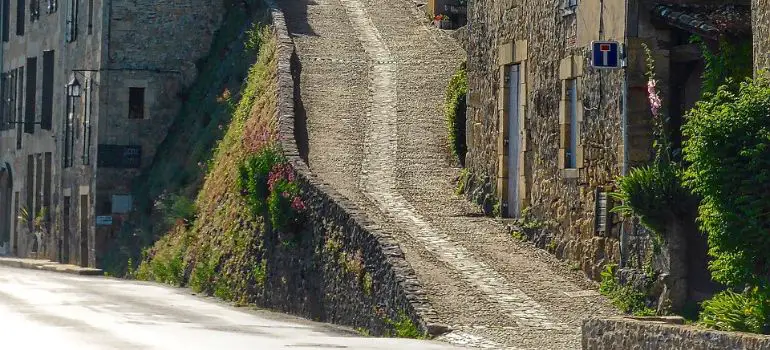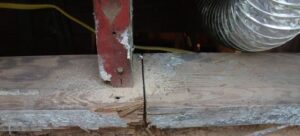When you’re working on a landscaping project or construction on a sloped area, one crucial aspect you need to consider is how much fill dirt you’ll require. Calculating the right amount of fill dirt is essential to ensure the stability and functionality of your project. In this article, we will guide you through the process of calculating fill dirt on a slope, step by step.
Understanding the Slope
Before diving into the calculations, it’s essential to understand the slope you’re dealing with. The slope’s angle and length will significantly influence the amount of fill dirt needed. Steeper slopes require more fill dirt to achieve a level surface.
Step 1: Measure the Slope Length
- Gather Your Tools: You’ll need a tape measure, a long piece of string, or a measuring wheel. Choose a tool that suits the terrain and slope you’re working with.
- Position Yourself: Stand at the top of the slope, ensuring you have a clear line of sight to the bottom. It’s essential to measure in a straight line along the slope’s surface for accuracy.
- Start Measuring: If you’re using a tape measure, extend it down the slope from the starting point (the top) to the ending point (the bottom). Keep the tape measure level with the ground for an accurate measurement.
- Record the Measurement: Note down the measurement in feet or meters, depending on your preference and the units you intend to use for the calculations. Make sure to record it accurately to avoid errors in your fill dirt calculations.
- Repeat If Necessary: If the slope has multiple sections or irregular shapes, repeat the measuring process for each section separately.
Step 2: Determine the Slope Angle
- Gather Your Tools: You’ll need a protractor, a smartphone with an angle measurement app, or a specialized inclinometer tool. Make sure your chosen tool is suitable for measuring angles in degrees.
- Position Yourself: Stand at the top of the slope, ensuring you have a clear view of the slope’s surface. Be ready to take the measurement from a point where you can accurately assess the angle.
- Place the Tool: If you’re using a protractor, align one side of it with the slope’s surface. Ensure that it’s perfectly level and parallel to the ground. If you’re using a smartphone app or inclinometer, follow the instructions provided by the tool to set it up correctly.
- Take the Measurement: Read the angle displayed on the protractor or app. This angle represents the slope’s inclination in degrees. Make sure to record this angle accurately, as even a slight error can affect your fill dirt calculations.
- Repeat If Necessary: If your project involves multiple sections with varying slope angles, repeat the measurement process for each section separately.
Calculating the Fill Dirt Volume
Now that you have the slope length and angle, you can proceed with the calculations. There are two common methods for calculating the volume of fill dirt: the triangle method and the prismoidal formula. We will explore both methods to ensure accuracy.
Method 1: Triangle Method
The triangle method is one of the techniques used to calculate the volume of fill dirt required for a slope. It’s particularly useful when dealing with a slope that has a consistent angle from top to bottom. Here’s how to use the triangle method step by step:
- Calculate the Area of the Triangle:
- Start by calculating the area of the triangle formed by the slope. This area represents the cross-section of the slope.
- Use the following formula: Area = (1/2) x base x height.
- The base of the triangle is the slope length that you measured previously.
- The height of the triangle is determined by the slope angle you measured earlier. Use the formula: Height = base x tan(angle).
- Determine the Volume:
- Once you have calculated the area of the triangle, you can now determine the volume of fill dirt needed for that section of the slope.
- Multiply the area of the triangle by the length of the slope section to get the volume.
- The formula to calculate volume is: Volume = Area x Length.
- Repeat for Each Section:
- If your slope has multiple sections or varying angles, repeat the above steps for each section separately.
- Calculate the area and volume for each section using the triangle method.
- Sum the Volumes:
- After calculating the volumes for each section, sum them up to obtain the total volume of fill dirt required for the entire slope.
- This total volume accounts for the varying angles and lengths along the slope.
Method 2: Prismoidal Formula

The prismoidal formula is another method used to calculate the volume of fill dirt needed for slopes, especially when dealing with irregular shapes or varying angles along the slope. This formula provides a more accurate estimate by breaking down the slope into smaller sections. Here’s how to use the prismoidal formula step by step:
- Divide the Slope into Sections:
- If your slope has irregular shapes or varying angles, the first step is to divide it into smaller sections or segments. Each segment should have a consistent angle or shape.
- Calculate the Cross-Sectional Areas:
- For each section, calculate the cross-sectional area. The cross-sectional area represents the shape of the slope section when viewed from the side.
- Measure the width (W) and depth (D) of each section to calculate the cross-sectional area.
- Use the formula for the area of a trapezoid: Area = (1/2) x (W1 + W2) x H, where W1 and W2 are the widths at the top and bottom of the section, and H is the height of the section (equal to the length of the section).
- Determine the Length of Each Section:
- Measure the length (L) of each section along the slope. This is the horizontal distance along the slope for each segment.
- Calculate the Volume for Each Section:
- Use the prismoidal formula to calculate the volume for each section: Volume = (1/6) x (A1 + 4A2 + A3) x L.
- A1, A2, and A3 are the cross-sectional areas calculated for each section.
- L is the length of the section.
- Sum the Volumes:
- After calculating the volumes for each section, sum them up to obtain the total volume of fill dirt required for the entire slope.
- This total volume takes into account the varying angles and shapes along the slope, making it a more precise estimate.
Step 3: Sum the Volumes
Summing the volumes is the final step in the calculation process when using the prismoidal formula or any method that involves dividing a slope into sections. This step is crucial to determine the total volume of fill dirt required for the entire slope accurately. Here’s how to sum the volumes:
- Calculate the Volumes for Each Section:
- As mentioned earlier, you’ve already calculated the volumes for each section of the slope using the prismoidal formula or another appropriate method. Each section has its own volume value.
- List the Volume Values:
- Create a list or a table that includes all the volume values you’ve calculated for each section. Organize these values in a clear and structured manner, making it easy to see and work with.
- Add the Volumes Together:
- Sum up all the volume values in the list or table. This total represents the combined volume of fill dirt needed for the entire slope.
- Round the Result (If Necessary):
- Depending on the units you are working with and the precision required for your project, you may need to round the total volume to the appropriate number of decimal places.
- Finalize the Calculation:
- The summed volume value represents the total amount of fill dirt you’ll need to level the entire slope, taking into account the varying angles and shapes of its sections.
Ordering Fill Dirt
Once you have calculated the volume of fill dirt needed, it’s time to order the material. When ordering fill dirt, consider ordering a bit more than your calculated volume to account for compaction and settling.
Conclusion
Calculating fill dirt on a slope is a crucial step in any landscaping or construction project. By following the steps mentioned above and understanding the slope’s characteristics, you can ensure that you have the right amount of fill dirt to create a stable and level surface.
Now that you’ve learned how to calculate fill dirt on a slope, you can confidently take on your next outdoor project with precision and accuracy.
FAQs
Yes, measuring the slope angle accurately is crucial for calculating the correct amount of fill dirt needed. Even a small error in the angle measurement can lead to inaccurate calculations.
The type of fill dirt you should use depends on your project’s specific requirements. It’s essential to consult with a landscaping or construction expert to determine the most suitable fill dirt for your needs.
You can use a protractor or a smartphone app to measure the slope angle accurately. These tools are readily available and easy to use.
If your slope is not uniform, you can divide it into sections and calculate the volume for each section separately using the prismoidal formula, as mentioned in the article.
To prevent erosion, consider adding erosion control measures such as retaining walls, vegetation, or erosion control blankets in addition to the fill dirt. Consulting with a landscaping expert can help you make the right choices.



